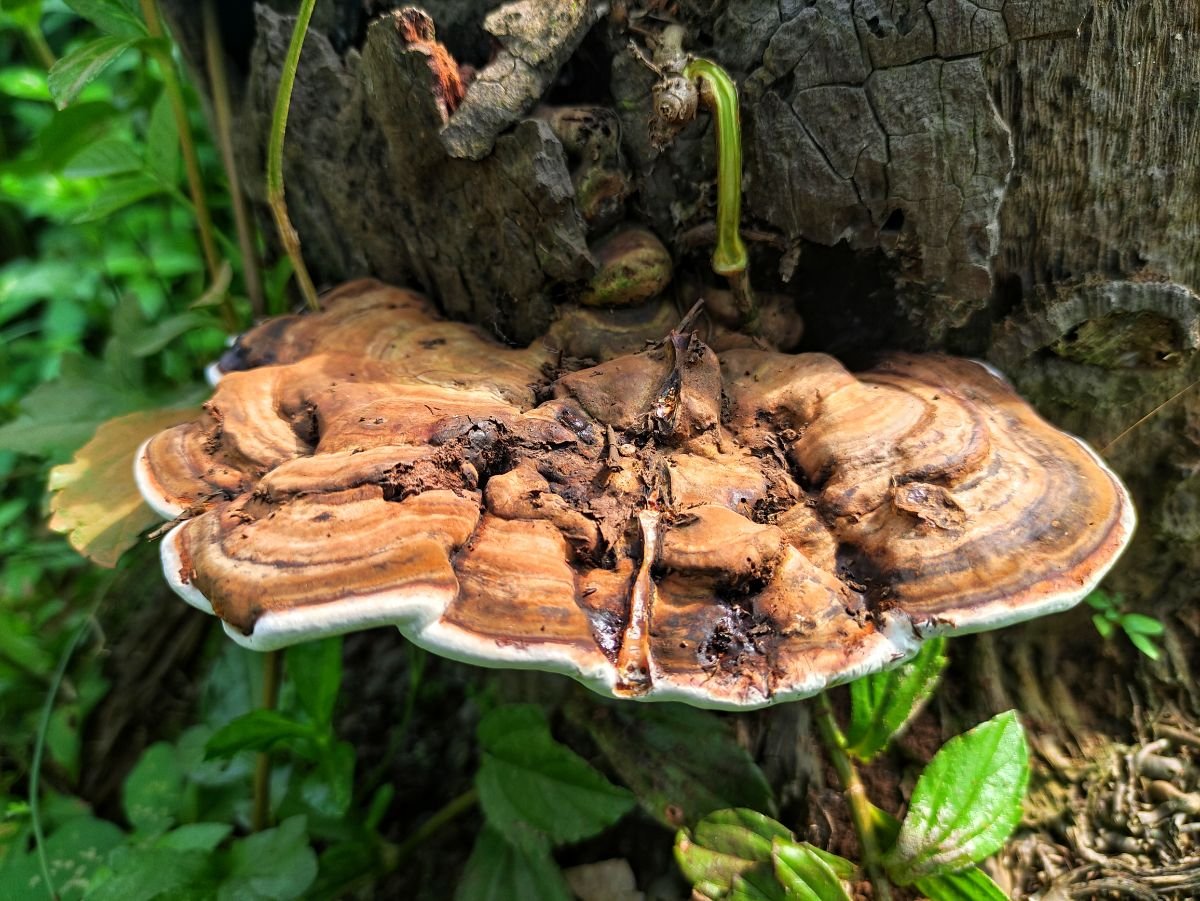Health Benefits
- Contains significant amounts of organic germanium (immune-enhancement, oxygen enrichment, free radical scavenging, analgesia, and heavy metal detoxification) (Dale Rogers, 2020)
- Beta-glucans and triterpenes are found in their fruiting bodies (Dale Rogers, 2020).
- Traditional Chinese Medicinal uses are to reduce mucous production, help indigestion, stop pain, and use in various antibiotic functions (Robert Rogers, 2006).
- It is specific for rheumatic tuberculosis and esophageal cancer (Robert Rogers, 2006).
- It has shown immune-stimulating properties in animal studies (Robert Rogers, 2006).
- There has been some success reported in treating Hashimoto’s disease (Robert Rogers, 2006)
- Immune modulating and anti-tumor activity (Jeong et al., 2088)
- Relief from gout with foot baths due to a compound that exhibits hypouricemic benefit which suppresses xanthine-oxidase activity (Dale Rogers, 2020).
- Hypourcemic agent which controls hyperuricemia thereby reducing risk of nephrolithiasis (kidney stones), gouty arthritis and subcutaneous tophi (a collection of monosodium urate crystals). (Liang et al., 2018).
- Dual extracted tincture has benefits for Hashimoto’s disease, an auto-immune thyroid condition (Dale Rogers, 2020).
- Both in vivo and in vitro show anti-cancer activity and exerts antitumor properties in Caco-2 (human colon cancer) (Elihateeb et al. 2018).
- The fruiting body shows activity against a number of viruses, including influenza, HIV-1, HSV-2 (herpes), vesicular stomatitis, and various orthopox species (Teplyakove & Kosogova, 2016).
- a source of antioxidants, anticancer, prebiotic, immunomodulating, anti-inflammatory, cardiovascular, anti-microbial, and hypoglycemic (Elihateeb et al. 2018)
- Antitumor effects on human breast cancer (Hanyu et al., 2019)
- Antibiotic activities against 6 bacterial strains (Pseudomonas aeruginosa reference strains PAO1 and PA14, P. fluorescens, Bacillus subtilis, Staphylococcus epidermidis, and Micrococcus luteus). (Health and Medicine, 2019)
- Significant antidepressant, anxiolytic (anti-anxiety) and analgesic (pain relief) activity (Hossen et al., 2021)
- Anticancer and Apoptic Activity in Cervical Adenocarcinoma (Kiddane et al., 2022)
References
Dale Rogers, R., 2020. Medicinal Mushrooms – The Human Clinical Trials. Independently published.
Elkhateeb, W. A., Zaghlol, G. M., El-Garawani, I. M., Ahmed, E. F., Rateb, M. E., & Abdel Moneim, A. E. (2018). Ganoderma applanatum secondary metabolites induced apoptosis through different pathways: In vivo and in vitro anticancer studies. Biomedicine & Pharmacotherapy, 101, 264–277. https://doi.org/10.1016/j.biopha.2018.02.058
Hanyu, X., Lanyue, L., Miao, D., Wentao, F., Cangran, C., & Hui, S. (2020). Effect of Ganoderma applanatum polysaccharides on MAPK/ERK pathway affecting autophagy in breast cancer MCF-7 cells. International Journal of Biological Macromolecules, 146, 353–362. https://doi.org/10.1016/j.ijbiomac.2020.01.010
Health and Medicine – Complementary and Alternative Medicine; Reports Outline Complementary and Alternative Medicine Study Results from Miami University [Evaluation of the Antibacterial Activity of 75 Mushrooms Collected In the Vicinity of Oxford, Ohio (Usa)]. (2019). In Genomics & Genetics Weekly (pp. 5426-). NewsRx.
Hossen, S. M. M., Islam, M. J., Hossain, Md. R., Barua, A., Uddin, Md. G., & Emon, N. U. (2021). CNS anti-depressant, anxiolytic and analgesic effects of Ganoderma applanatum (mushroom) along with ligand-receptor binding screening provide new insights: Multi-disciplinary approaches. Biochemistry and Biophysics Reports, 27, 101062–101062. https://doi.org/10.1016/j.bbrep.2021.101062
Jeong, Y.-T., Yang, B.-K., Jeong, S.-C., Kim, S.-M., & Song, C.-H. (2008). Ganoderma applanatum: a promising mushroom for antitumor and immunomodulating activity. Phytotherapy Research, 22(5), 614–619. https://doi.org/10.1002/ptr.2294
Kiddane, A. T., Kang, M.-J., Ho, T. C., Getachew, A. T., Patil, M. P., Chun, B.-S., & Kim, G.-D. (2022). Anticancer and Apoptotic Activity in Cervical Adenocarcinoma HeLa Using Crude Extract of Ganoderma applanatum. Current Issues in Molecular Biology, 44(3), 1012–1026. https://doi.org/10.3390/cimb44030067
Liang, D., Yong, T., Chen, S., Xie, Y., Chen, D., Zhou, X., Li, D., Li, M., Su, L., & Zuo, D. (2018). Hypouricemic Effect of 2,5-Dihydroxyacetophenone, a Computational Screened Bioactive Compound from Ganoderma applanatum , on Hyperuricemic Mice. International Journal of Molecular Sciences, 19(5), 1394-. https://doi.org/10.3390/ijms19051394
Rogers, R. (2006). The fungal pharmacy: Medicinal mushrooms of Western Canada. Prairie Deva Press.

